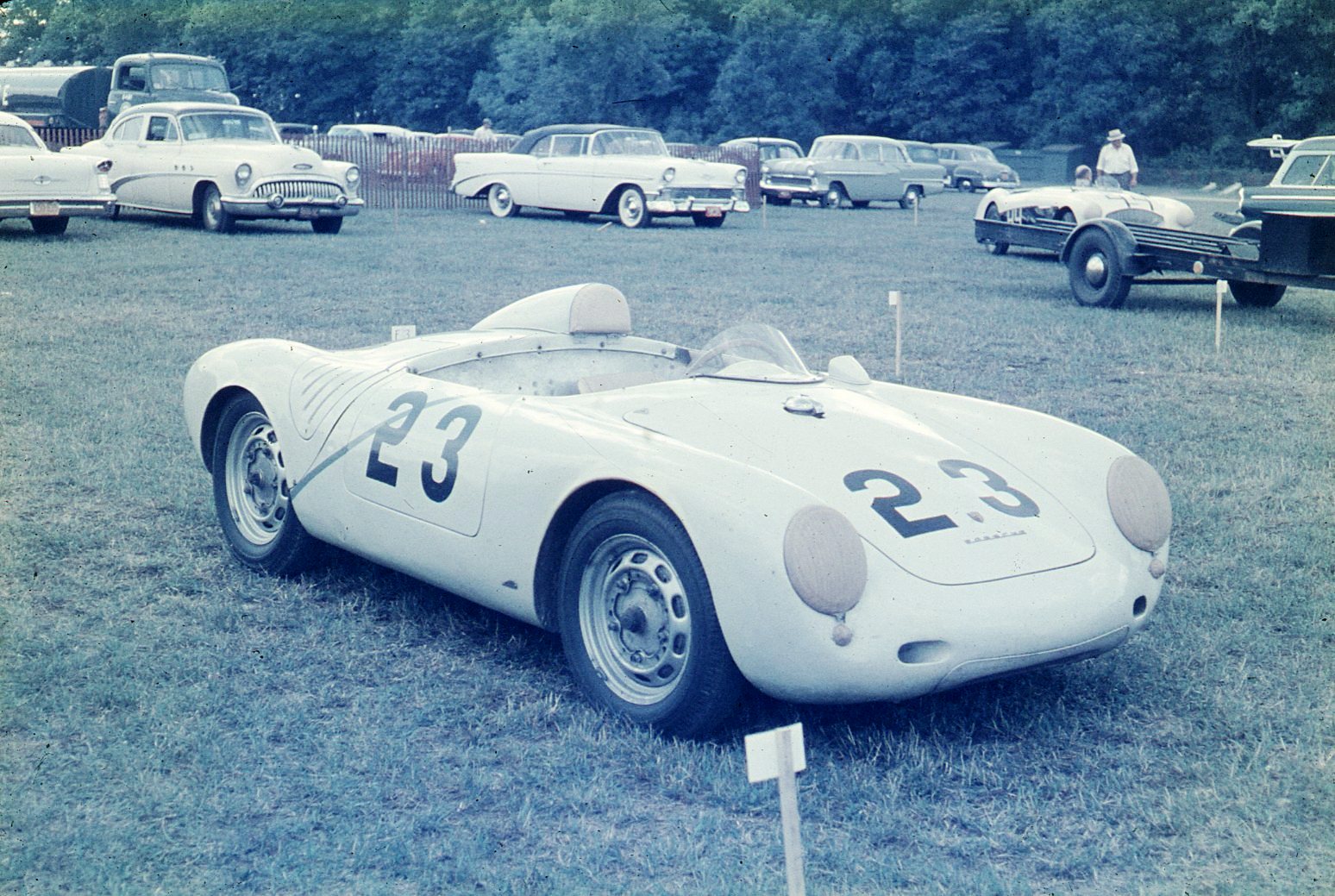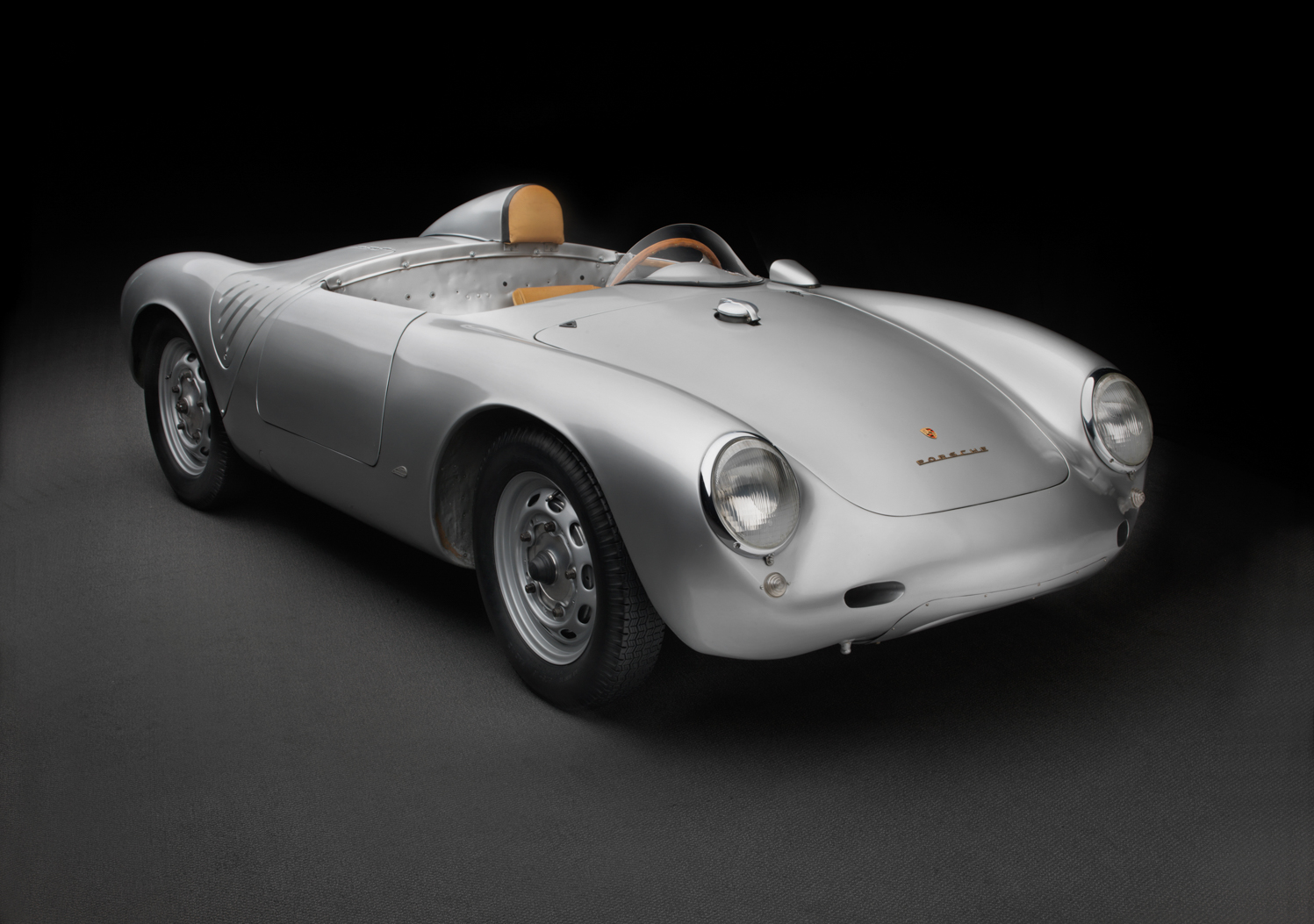Tech Specs
Flat-four, air-cooled engine, mounted midship, twin overhead camshafts, 1498 cc, 135 hp at 7200 rpm.
Before/After
1956 Porsche


About the 1956 Porsche 550A
Despite its designation, this Spyder was a brand-new model. The 550A carried on the Giant Killer image begun by the 550, but did so with better manners. There was a reason.
The engine was the same: the Dr. Ernest Fuhrmann-designed air-cooled flat four that combined gear and shaft driven double overhead cams, roller bearing crankshaft, twin ignition, dry sump lubrication – and which, to the cognoscenti, was already approaching legendary status. But whereas the 550 had a ladder chassis, the 550A had a space frame, which made a huge difference. Chassis weight was cut by up to 95 pounds and rigidity increased. These benefits in turn permitted another 60 pounds to be taken off the all aluminum body – all of which made a considerably faster car. But impeccable handling was the 550A’s long suit.
Spyder man Ken Miles said the difference was “almost unbelievable.” Still, if the predecessor 550 confused drivers in a turn (one couldn’t be sure where the car would end up) and the successor RSK scared them to death (the tail breaking away viciously without warning), winning remained a constant with all Spyders.
Class victories for the 550A were so commonplace they don’t bear mention – except perhaps for the last Mille Miglia in 1957 where Umberto Maglioli’s 88.31 mph average, 5th overall and 1st in class was Porsche’s best ever in that Italian classic. But for sheer audacity it didn’t compare with the trip to Sicily in 1956 for which Porsche racing director Huschke von Hanstein took just one 550A, driver Maglioli and two mechanics. The 1.5-liter Spyder won the Targa Florio outright, defeating a trio of 3.5 Ferraris, three 300SL Mercedes and a gaggle of Maseratis.
“The greatest long-distance racer in the world” was Ken Miles’ assessment of the Spyder. Demanding to be driven well, these Porsches provided intensive course work for an entire generation of drivers who graduated from Spyders to stardom: von Trips, von Frankenburg, Barth, Moss, Bonnier, Behra, Gendebien, Ginther, Gurney, Holbert, Jennings, Gregory, Penske. The list goes on and on. “We were certified sports-car nuts,” wrote John Jerome nostalgically, “and we needed something to believe in.” The Spyder kept the faith.
Photos – Peter Harholdt












